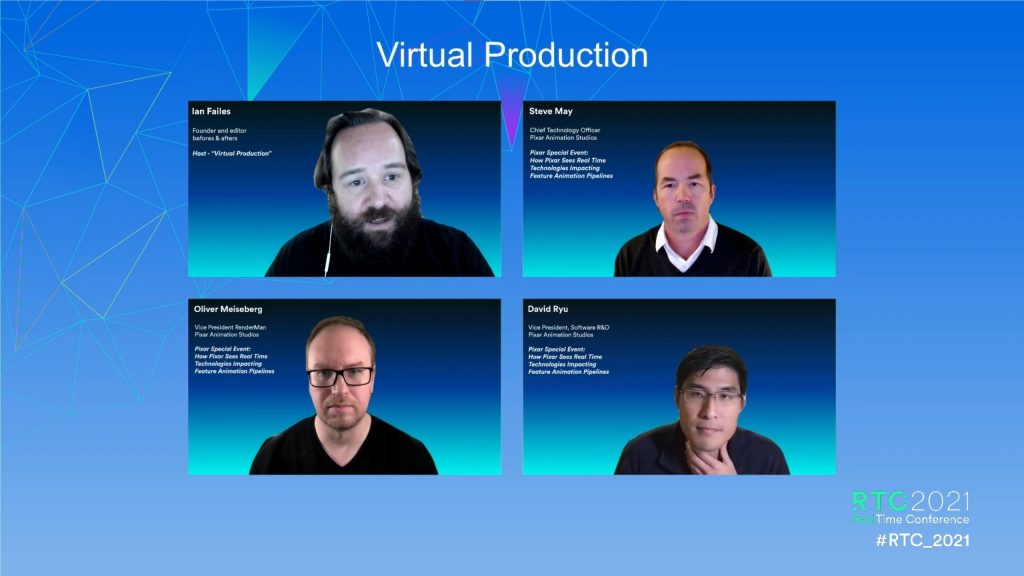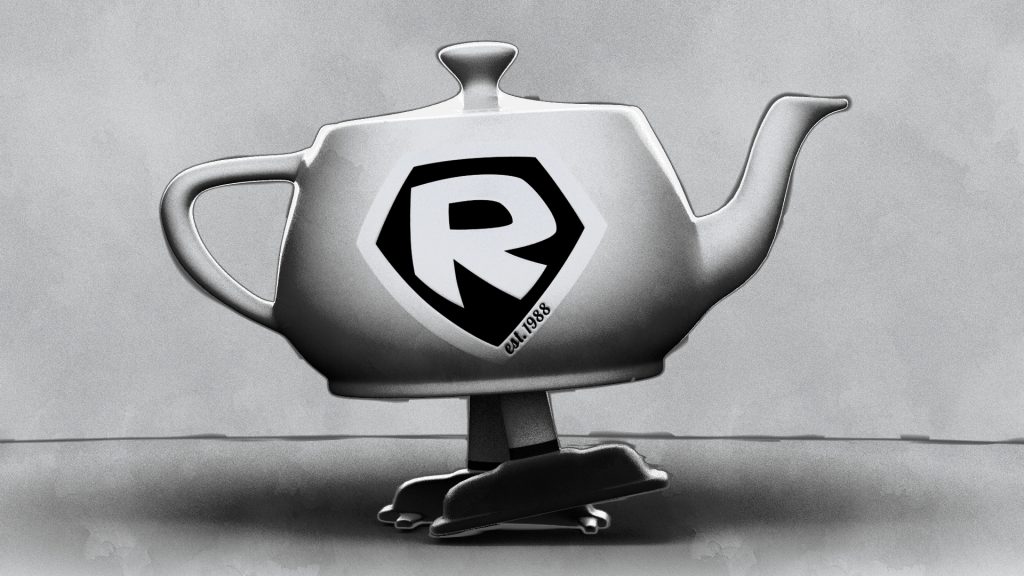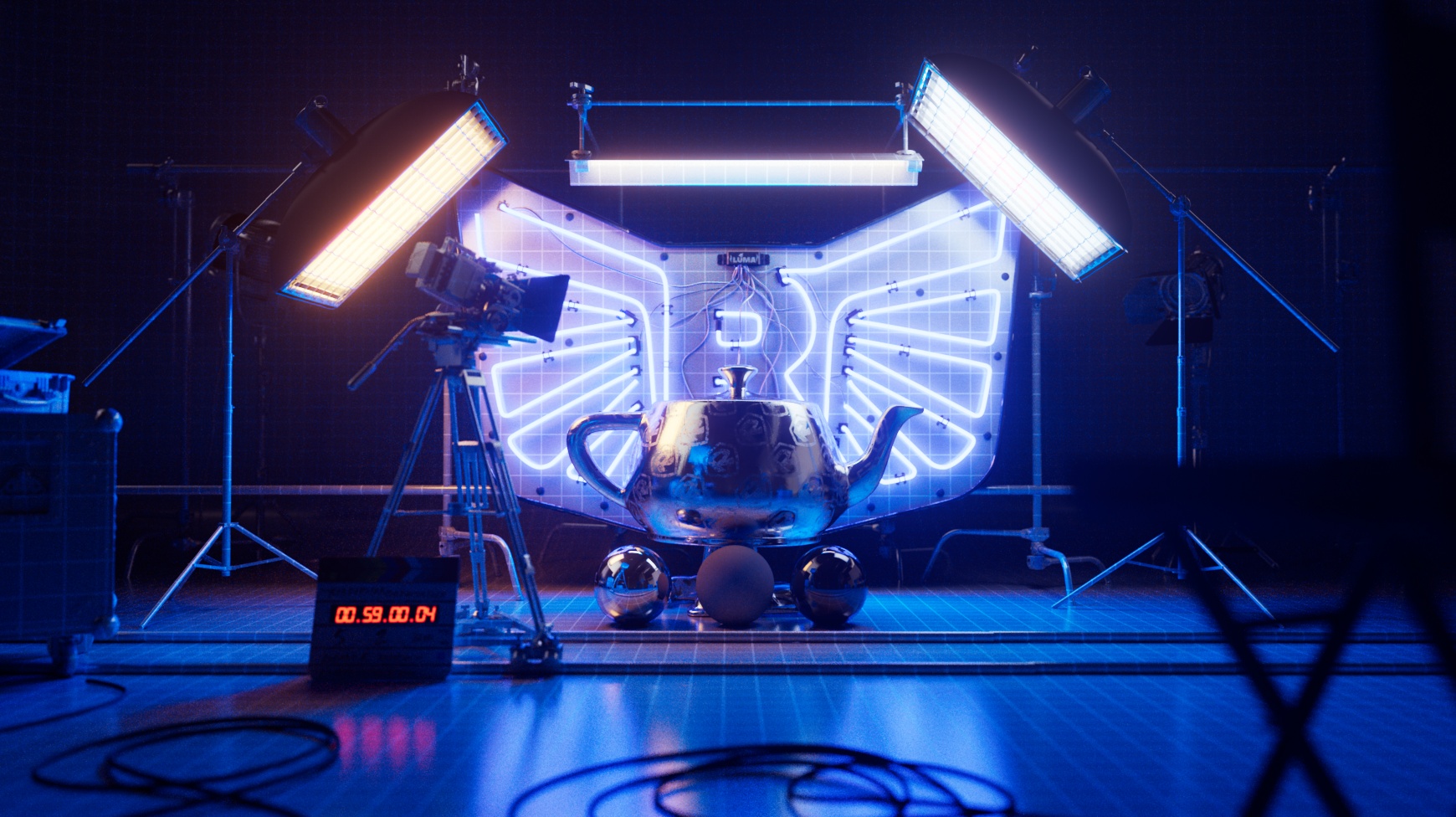This article is also available in:
French
During the last edition of the RealTime Conference, Oliver Meiseberg, Vice-President – RenderMan, shared his view on the metaverse and the future of animation pipelines.
Thanks to the team behind the event, we asked him a few questions about RenderMan & the future of the industry: how the RenderMan roadmap is established, XPU, AI, Blender, the rise of game engines.

3DVF: Could you introduce yourself and what you do at Pixar Animation Studios?
Oliver Meiseberg: Hi, my name is Oliver Meiseberg, I’m the vice president of RenderMan at Pixar Animation Studios. I’m in charge of leading the RenderMan team which develops the latest generation technology at Pixar Animation Studios to bring all the great animation and simulation to the screen and create the final pixels.
3DVF: How do you decide what major milestones to include on the RenderMan roadmap, between the vision of the RenderMan team, the needs of Pixar or of third-party customer from big studios, indie artists, and the pressure of your competitors, through many conflicting ideas and priorities?
Oliver Meiseberg: It’s an interesting question. It’s always the argument that people and teams need to have in order to prioritize things in the right way. We’re definitely focusing on what we create at Pixar. Obviously, our movies are the most important ones that we create. Oftentimes, it’s actually in line with what our external customers want as well. There’s not a lot of times where conflict is happening and these discussions are actually easy to have. I think it’s more a question about, what are the risks that we’re willing to take to also push RenderMan to its next phase? With the launch of XPU this year, we hit a major milestone, but we also need to focus what’s happening next. This is what we’re working on with our customers and with our artists at the studio.
3DVF: As you explained, XPU is one of the major selling points of RenderMan 24. At the moment, this rendering technology is mainly aimed at lookdev and layouts, but it is clearly destined to be used for final shot production in the future. Can you tell us how XPU might evolve in the next year or two?
Oliver Meiseberg: XPU is definitely a major milestone for us as a RenderMan group and for Pixar as a studio as a whole, and adds a lot of benefits to our customer’s pipelines as well. What we want to do when we deliver a RenderMan release is deliver a workflow. We don’t just want to deliver a feature that’s out of context, we want to deliver it to our workflows. This is what we focused around, looked at in the first place, to cover the entire workflow step in all of dev stage
“What we want to do when we deliver a RenderMan release is deliver a workflow”
Oliver Meiseberg – Vice President, Renderman
We’re working very actively on adding the lighting stages and make it ready for final frame rendering in the very near future. We’re working in full steam on RenderMan XPU, because that’s the next platform. We’re also working on a plan to retire RIS at some point, but before we do that, XPU needs to be ready for final shot production. Obviously, we want to make that happen as soon as possible.

3DVF: Are we going to see new features using AI and deep learning with RenderMan? If so, could you give us a hint about what we can expect?
Oliver Meiseberg: Yes, absolutely. AI and deep learning are an essential part of the work we do at the studio. Obviously, denoising is a big topic to add to the RenderMan pipeline. We’re currently supporting denoising technologies coming from our industry partners, but we’re also working on in-house denoising technology that was developed in collaboration with Disney Research|Studios in Zurich. This is something we could be looking to productize around RenderMan in the near future. We don’t know when it will be, but it will come fairly soon.

3DVF: More and more studios use Blender. The RenderMan team is clearly taking this into account since RenderMan for Blender has been rewritten and can take advantage of RenderMan 24. There are still some improvements to be made though, for example, the ability to dispatch render jobs to the Pixar Tractor render manager directly from Blender. Are you working on improvements such as this one or more generally, what is your strategy when it comes to RenderMan and Blender?
Oliver Meiseberg: Blender’s extremely important. Not just to us as a RenderMan team, but to the industry as a whole. I think it’s been around for a very long time. With the latest release around Blender, the feature set is just incredible. For us as a RenderMan team, we see a huge community out there and great content creators and filmmakers. We want to give them the same tools that we use at the studio. We changed the Blender strategy as a whole and took on the development.
Our commitment is that we treat it the same way we treat our Maya, Katana, Houdini integrations. Obviously, because it’s a recent add to our portfolio, there are definitely a few features that we need to work on. Tractor support is definitely one of them to support Blender in a render farm context. There are also different features like grease pencil which is completely in line with our new stylized looks feature in RenderMan 24. It’s not fully supported yet, but it’s something we’re looking into.
“Our commitment is that we treat Blender the same way we treat our Maya, Katana, Houdini integrations”
Oliver Meiseberg – Vice President, Renderman
We’re talking to customers and artists about it to see how we can get a great grease pencil integration done with RenderMan and connected to a new stylized looks feature as non-photorealistic rendering becomes a really big topic for a lot of studios out there these days.
Also, the transition to Blender is a big topic for a lot of studios. I think there’s a big trend that’s going on around the Blender community, and we couldn’t be more excited to support Blender.
3DVF: Unreal, Unity present themselves as alternatives to offline 3D renderers. What’s your take on this new competition? Where do you think the market is headed in the next 5 to 10 years?
Oliver Meiseberg: I don’t really see it as competition. I think they’re all tools that we give to artists to create the best form of art they can. I think it’s a good situation to be in because they definitely challenge the status quo to traditional offline rendering. Both sides, real-time and offline have pros and cons. Obviously, offline rendering is slower than game engines. Game engines have other constraints that we don’t have in the offline world.
Looking down the line in 5 to 10 years, I think we all will meet in the middle. Offline renderers will become faster and game engines will be able to get rid of their current limitations. With Nanite in Unreal Engine, for example, we see that complexity can be handled in such a game engine. I think at the end of the day, it’s a tools arsenal that we all provide to artists and it’s up to them to pick and choose the right one for their pipeline. It’s, I think, always good to have the option. What’s the goal you have in the long run and what’s the quality also you want to deliver?
I think at the end of the day, it’s a trade-off between… you have the time maybe for an offline renderer, and a perfect pixel accuracy is what matters, or I can take some shortcuts and want to have it in real-time because I need to deliver things really fast. I think it’s good to have the options there because they were not there when I started 3D. Having these tools available now is a fantastic choice for artists.
Looking down the line for 5 to 10 years, I think it’s going to be an exciting time with a lot of developments, also driven by new technologies coming up: denoising technology, AI, deep learning. We will see what happens in the metaverse. All these things influence technology at large and not just game engines, but also offline renderers. GPUs are largely important now with its all-around performance and speed. It’s going to be an interesting next 5 to 10 years, and we’re really looking forward to it.
3DVF: Thanks, Oliver! And thanks to the team behind the RealTime Conference, including Alvaro Lamarche Toloza (Head of Communications), Jean-Michel Blottière (founder and CEO).
More Informatioon:
- Pixar’s RenderMan official website: technical information, free non-commercial license, tutorials, support.
- The official RealTime Conference website: details about the event, free access to videos from previous RealTime Conferences.

